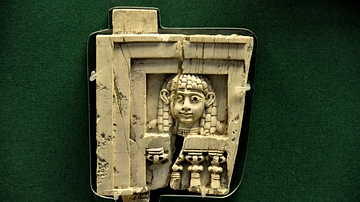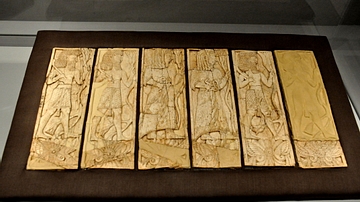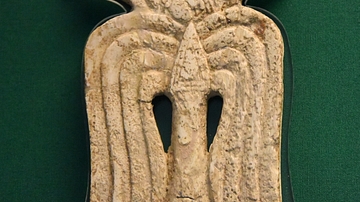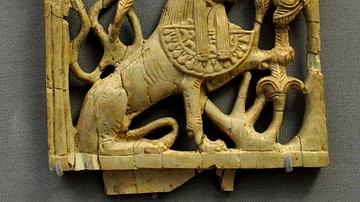Illustration
"Woman at the window" or "the lady of the window" is one of the most famous scenes in Phoenician ivory carving. The plaque shows a woman who looks out of a window, thought to be a sacred prostitute linked to the goddess Astarte or Ishtar. However, the exact significance of the scene is still unknown. Neo-Assyrian period, 9th-7th centuries BCE. From Nimrud, Mesopotamia, Iraq. (The Sulaimaniya Museum, Iraq).
About the Author
Cite This Work
APA Style
Amin, O. S. M. (2014, July 26). Ivory Plaque of Woman at the Window. World History Encyclopedia. Retrieved from https://www.worldhistory.org/image/2872/ivory-plaque-of-woman-at-the-window/
Chicago Style
Amin, Osama Shukir Muhammed. "Ivory Plaque of Woman at the Window." World History Encyclopedia. Last modified July 26, 2014. https://www.worldhistory.org/image/2872/ivory-plaque-of-woman-at-the-window/.
MLA Style
Amin, Osama Shukir Muhammed. "Ivory Plaque of Woman at the Window." World History Encyclopedia. World History Encyclopedia, 26 Jul 2014, https://www.worldhistory.org/image/2872/ivory-plaque-of-woman-at-the-window/. Web. 18 Apr 2025.








